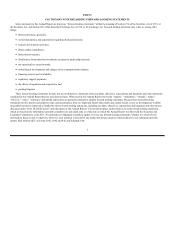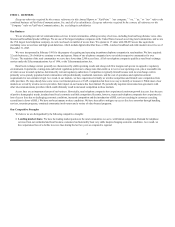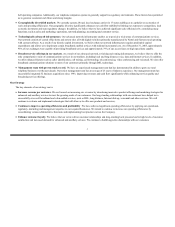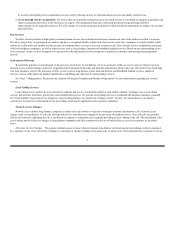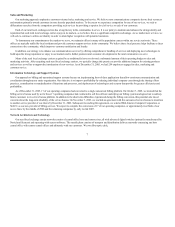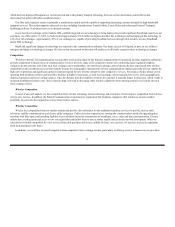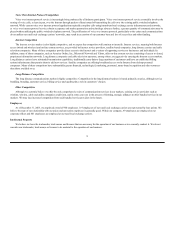FairPoint Communications 2005 Annual Report Download - page 4
Download and view the complete annual report
Please find page 4 of the 2005 FairPoint Communications annual report below. You can navigate through the pages in the report by either clicking on the pages listed below, or by using the keyword search tool below to find specific information within the annual report.
We are a leading provider of communications services in rural communities, offering an array of services, including local and long distance voice, data,
Internet and broadband product offerings. We are one of the largest telephone companies in the United States focused on serving rural communities, and we are
the 17th largest local telephone company, in each case based on number of access lines. We operate in 17 states with 288,899 access line equivalents
(including voice access lines and high speed data lines, which include digital subscriber lines, or DSL, wireless broadband and cable modem) in service as of
December 31, 2005.
We were incorporated in February 1991 for the purpose of acquiring and operating incumbent telephone companies in rural markets. We have acquired
32 such businesses, 28 of which we continue to own and operate. Many of our telephone companies have served their respective communities for over
75 years. The majority of the rural communities we serve have fewer than 2,500 access lines. All of our telephone companies qualify as rural local exchange
carriers under the Telecommunications Act of 1996, or the Telecommunications Act.
Rural local exchange carriers generally are characterized by stable operating results and strong cash flow margins and operate in supportive regulatory
environments. In particular, existing state and federal regulations permit us to charge rates that enable us to recover our operating costs, plus a reasonable rate
of return on our invested capital (as determined by relevant regulatory authorities). Competition is typically limited because rural local exchange carriers
primarily serve sparsely populated rural communities with predominantly residential customers, and the cost of operations and capital investment
requirements for new entrants is high. As a result, in our markets, we have experienced virtually no wireline competition and limited voice competition from
cable providers. We may already have some voice over Internet protocol, or VoIP, competition but there is no way to identify or measure it. While most of our
markets are served by wireless service providers, their impact on our business has been limited. We periodically negotiate interconnection agreements with
other telecommunications providers which could ultimately result in increased competition in those markets.
Access lines are an important element of our business. Historically, rural telephone companies have experienced consistent growth in access lines because
of positive demographic trends, insulated rural local economies and little competition. Recently, however, many rural telephone companies have experienced a
loss of access lines due to challenging economic conditions, increased competition and the introduction of DSL services (resulting in customers canceling
second lines in favor of DSL). We have not been immune to these conditions. We have been able to mitigate our access line loss somewhat through bundling
services, retention programs, continued community involvement and a variety of other focused programs.
We believe we are distinguished by the following competitive strengths:
· We have the leading market position in the rural communities we serve, with limited competition. Demand for telephone
services from our residential and local business customers has historically been very stable despite changing economic conditions. As a result, we
have experienced less of a decline in access lines during the last two years as compared to regional
2



